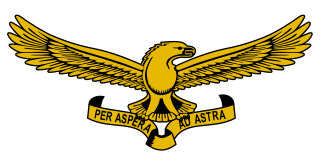
The South African Air Force (SAAF) is the air warfare branch of South African National Defence Force, with its headquarters in Pretoria. The South African Air Force was established on 1 February 1920. The Air Force saw service in World War II and the Korean War. From 1966, the SAAF was involved in providing infantry support in the low-intensity Border War in Angola, South-West Africa and Rhodesia. As the war progressed, the intensity of air operations increased, until in the late 1980s when the SAAF were compelled to fly fighter missions against Angolan aircraft in order to maintain tactical air superiority. On conclusion of the Border War in 1990, aircraft numbers were severely reduced due to economic pressures as well as the cessation of hostilities with neighbouring states.

The South West Africa Territorial Force (SWATF) was an auxiliary arm of the South African Defence Force (SADF) and comprised the armed forces of South West Africa from 1977 to 1989. It emerged as a product of South Africa's political control of the territory which was granted to the former as a League of Nations mandate following World War I.

The Rhodesian Air Force (RhAF) was an air force based in Salisbury which represented several entities under various names between 1935 and 1980: originally serving the British self-governing colony of Southern Rhodesia, it was the air arm of the Federation of Rhodesia and Nyasaland between 1953 and 31 December 1963; of Southern Rhodesia once again from 1 January 1964; and of the unrecognised nation of Rhodesia following its Unilateral Declaration of Independence from Britain on 11 November 1965.

The Rhodesian Special Air Service or Rhodesian SAS was a Rhodesian special forces unit. It comprised:

Canrobert Airfield was a World War II military airfield in Algeria, located approximately 4 km south of Oum el Bouaghi, approximately 70 km southeast of Constantine. It was used by the United States Army Air Force Twelfth Air Force during the North African Campaign against the German Afrika Korps. The Allied commanders made desperate efforts to prepare forward airfields for the use of fighters and fighter-bombers. Canrobert was one of these intermediate fields.

4 Squadron SAAF was a South African Air Force unit which served during World War II.
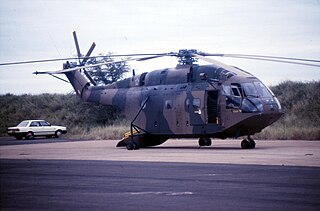
30 Squadron SAAF was a squadron of the South African Air Force. It was established in 1944 and saw service as a medium bomber squadron in Italy during the Second World War. After the war, the squadron was disbanded and was resurrected in 1980 as a medium transport helicopter squadron – a role it retained until it was finally disbanded in 1991.
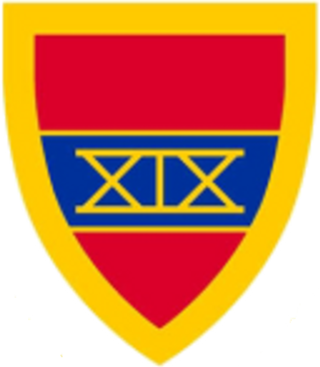
The Umkhonto Field Engineer Regiment is a regiment of the South African Army Engineer Formation. The unit is based in Durban with the HQ being at Old Fort Military Base, Lord's Grounds. As a reserve unit, it has a status roughly equivalent to that of a British Army Reserve or United States Army National Guard unit.

Western Province Command was a command of the South African Army.

The South African Army Signal Formation is a formation/corps of the South African Army.

122 Squadron SAAF was a South African Air Force squadron formed in 1970 to operate the South African/French Cactus surface-to-air missile systems in an air defence role. The unit was disbanded when the Cactus system was retired from service in the late 1980s.

In April 1978, the South African Minister of Defence authorized the formation of 44 Signal Squadron. From 24 September 1980 until October 1986, 44 Signal Squadron supported 44 Brigade in all aspects of signals, e.g., the supply of communication and the manning of a Communication Centrum (Comcen). From 2 October 1986, the Squadron was upgraded to a Signal Unit with Commandant Lombard as commander and tasked to supply the Brigade with communication and establish a full-strength Unit. The unit's second in command was Maj P. Drotsky and the RSM P. Snyders. The signal unit flag was authorized in 1986. After the restructuring of the SADF as the SANDF in 1994, the unit was renamed 13 Signals Squadron.

1 South African Corps was a large military formation composed of two SADF Divisions.

33 Battalion or the Eastern Caprivi Battalion, was a light infantry battalion that was part of the SWATF.
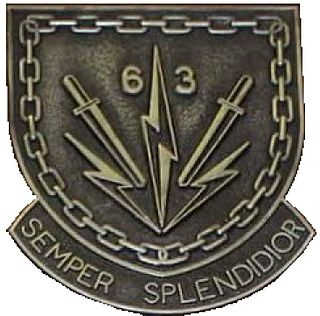
63 Mechanised Battalion Group was a unit of the South African Infantry Corps; although it was classed as mechanized infantry, it was a combined arms force consisting of infantry, armour and artillery. Together with 61 Mechanised Battalion Group and 62 Mechanised Battalion Group, these units made up 60 Brigade encompassing battlegroup principles.

62 Mechanised Infantry Battalion Group was a unit of the South African Army (SADF); although it was classed as mechanized infantry, it was a combined arms force consisting of a Mechanised Infantry Battalion forming the core of the group, Main Battle Tank Squadron, Armoured Car Squadron, Air-defence Battery, Engineer Squadron, Artillery Battery, specialists i.e. EW, MAOT, etc. and all the supporting staff and functions required for such a force.
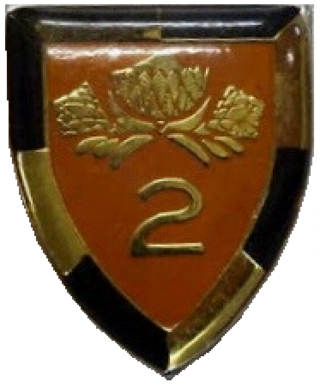
2 Special Service Battalion was an armoured regiment of the South African Army and only one of two such in its regular force. The Regiment was based at Zeerust. It was known in English as, 2 Special Service Battalion, and in the Afrikaans language as, 2 Spesiale Diens Bataljon.

71 Motorised Brigade was a formation of 7th South African Infantry Division, a combined arms force consisting of infantry, armour and artillery.

72 Motorised Brigade was a Formation of 7th Infantry Division, a combined arms force consisting of infantry, armour and artillery.

73 Motorised Brigade was a Formation of 7th Infantry Division, a combined arms force consisting of infantry, armour and artillery.




















